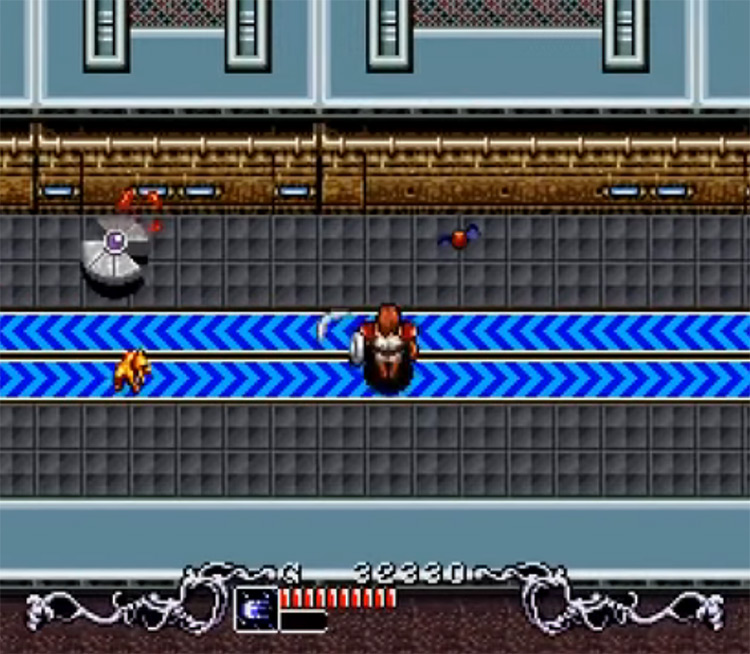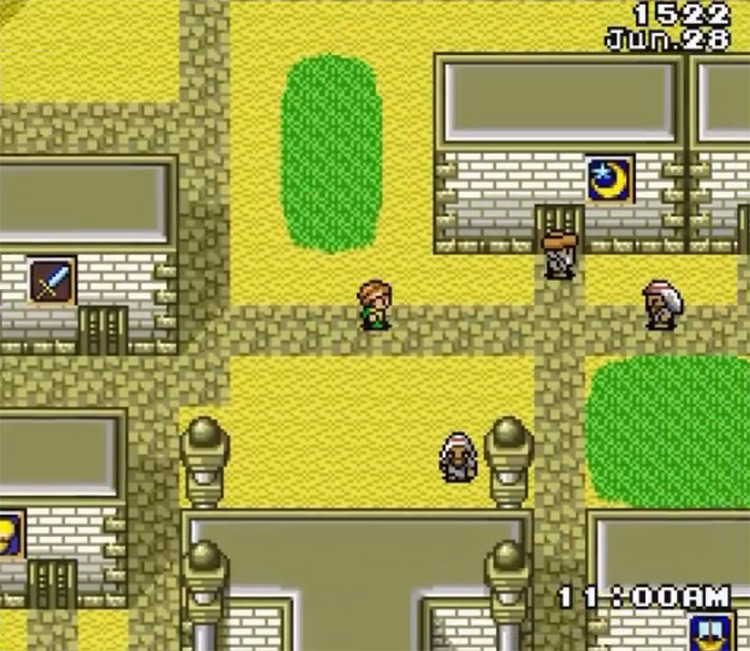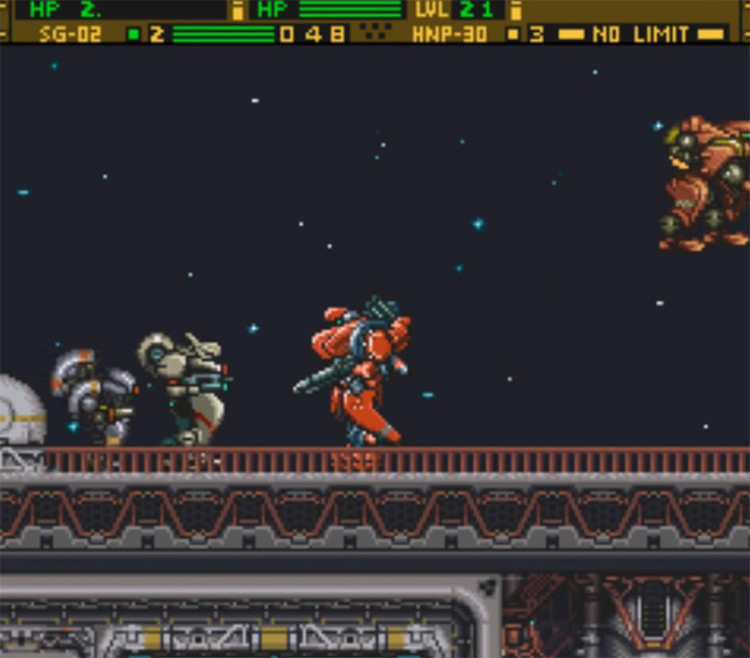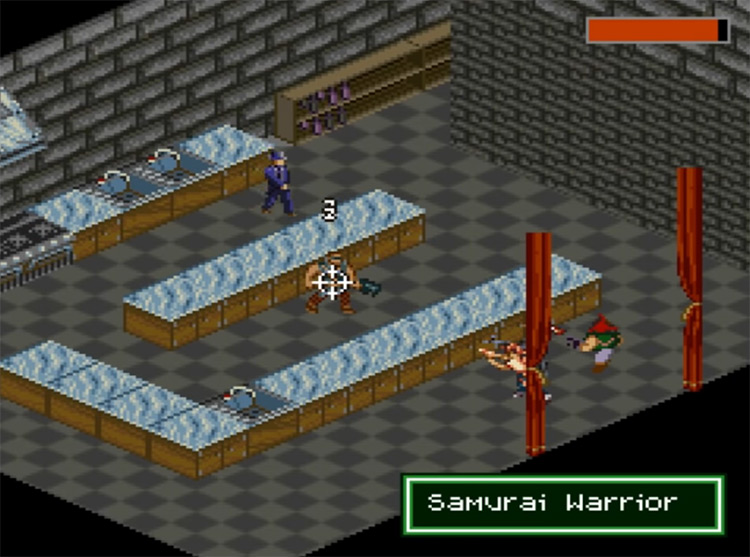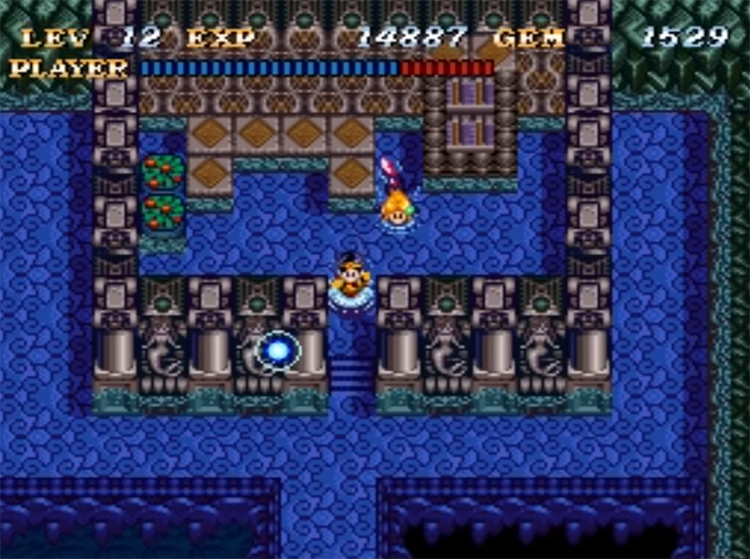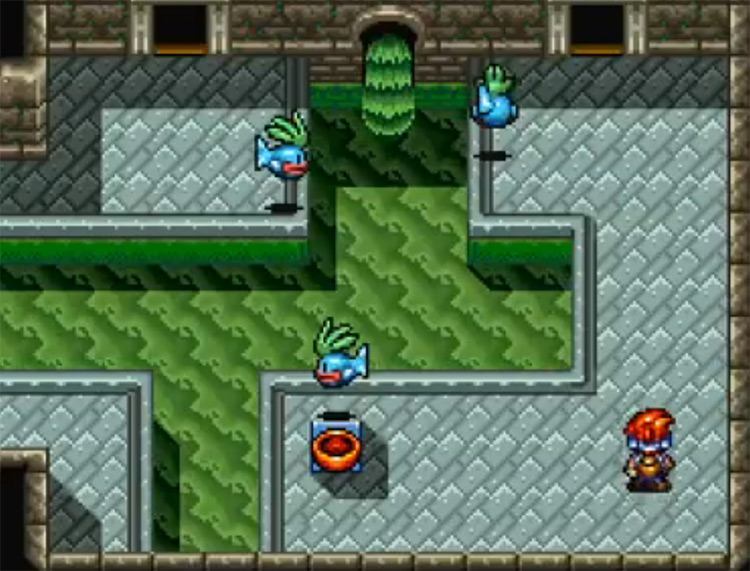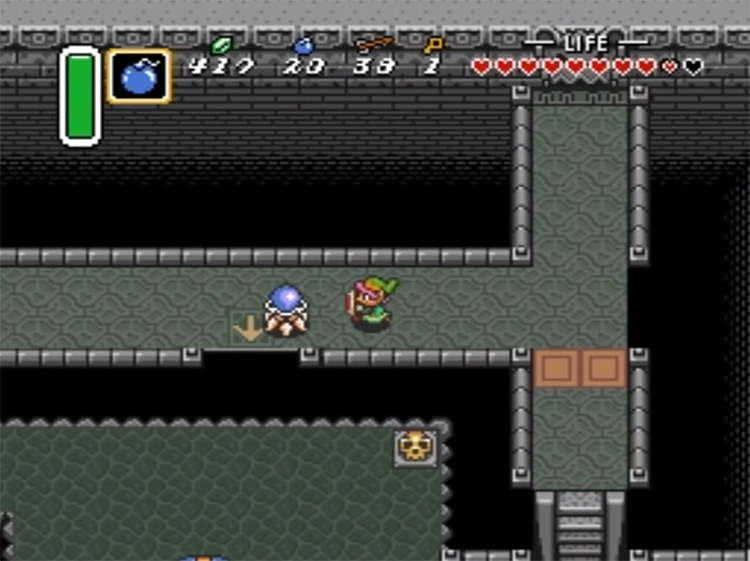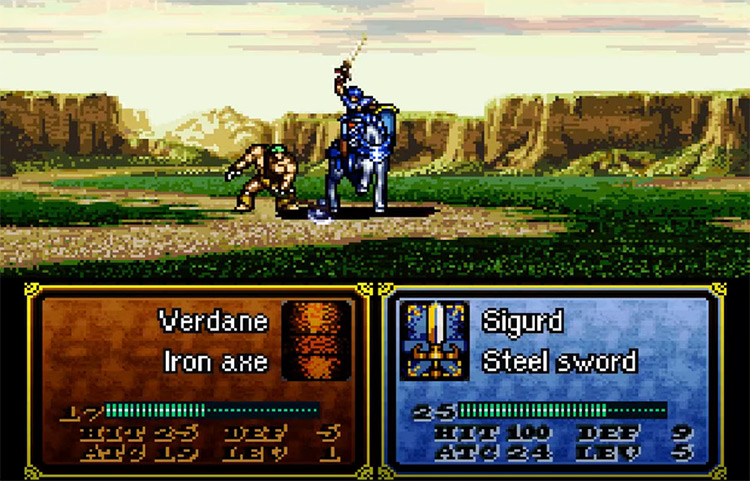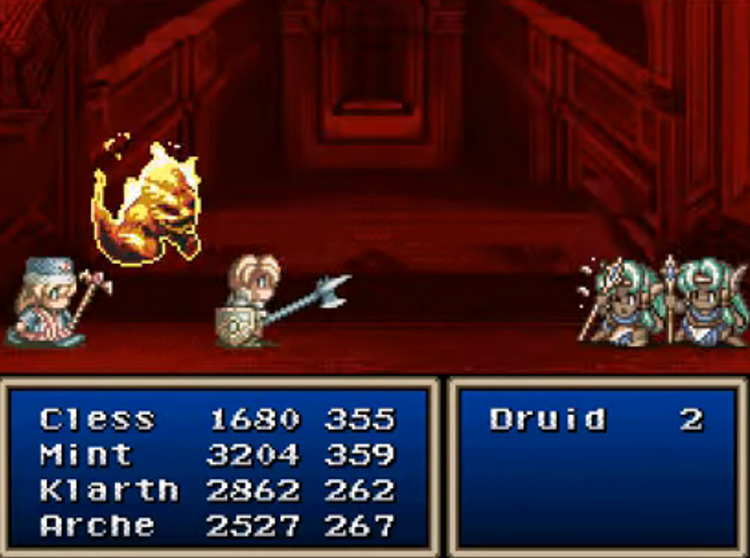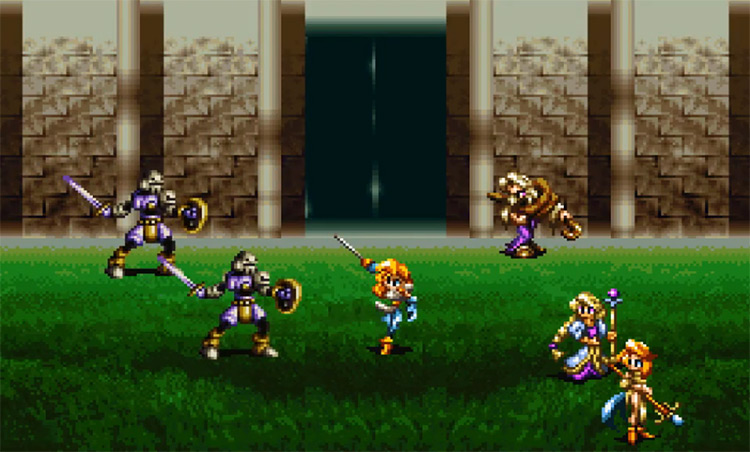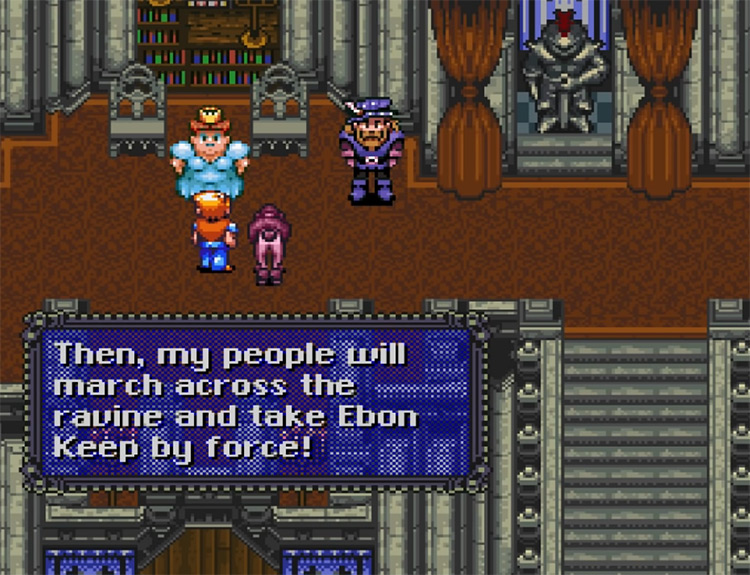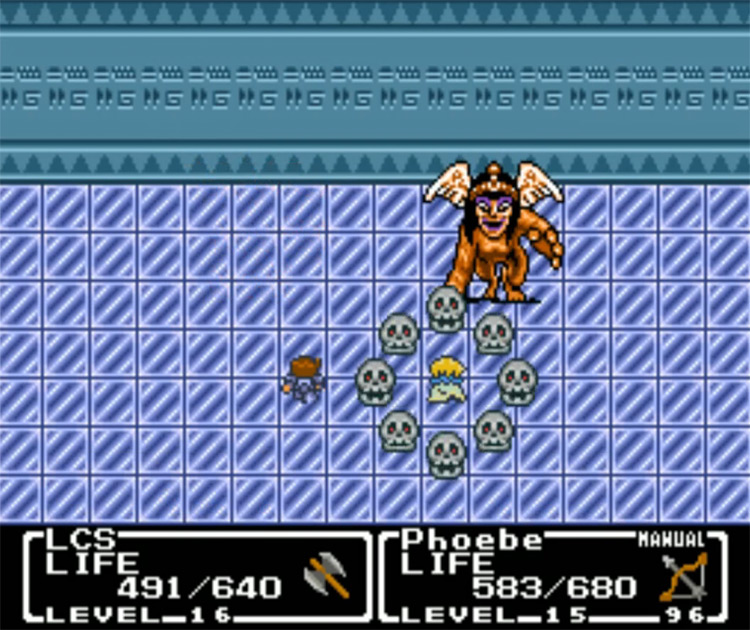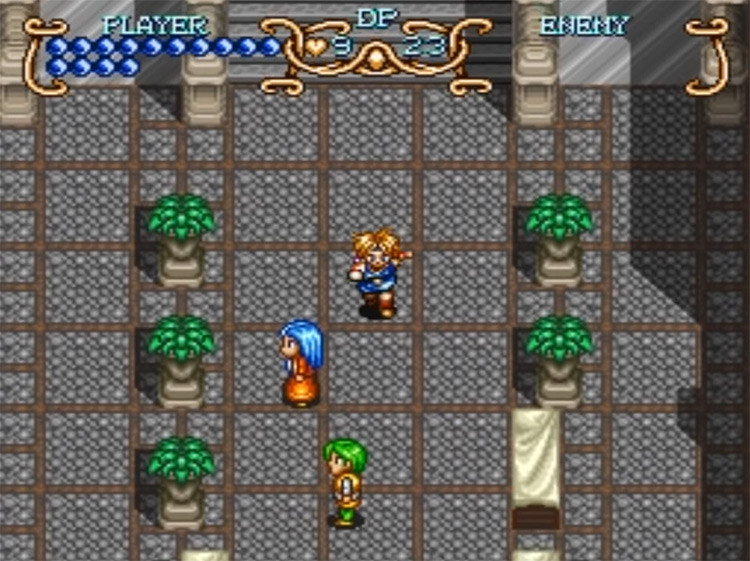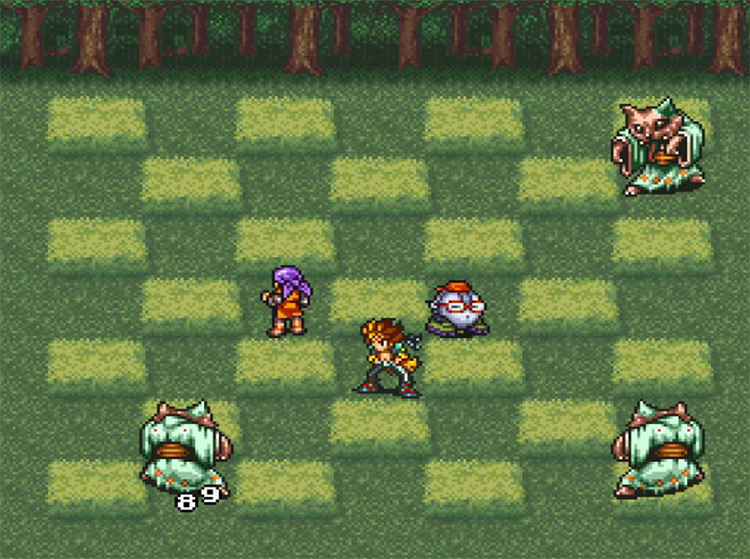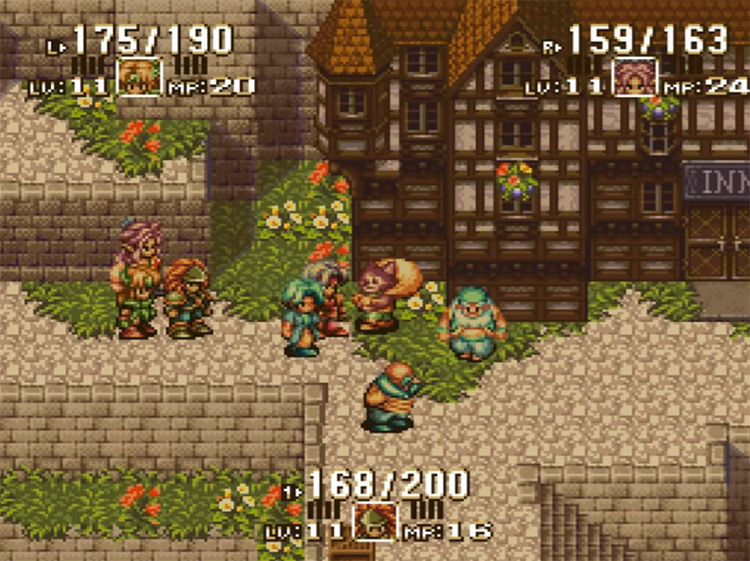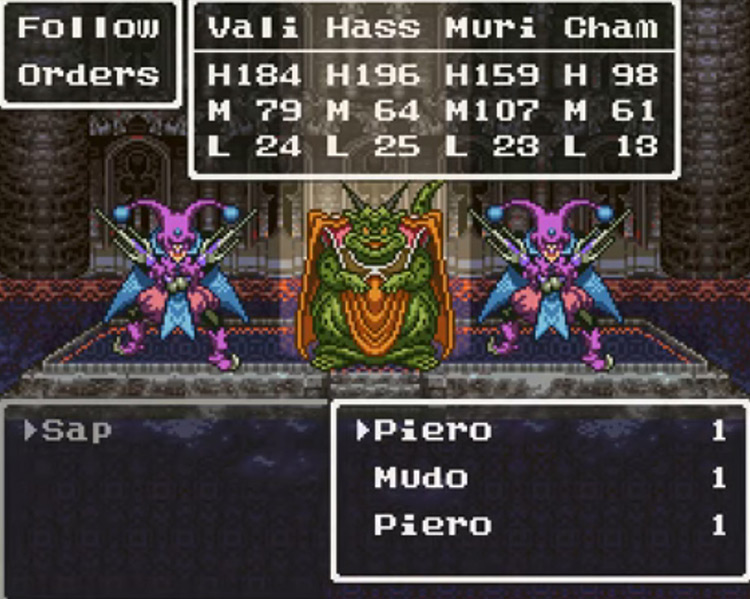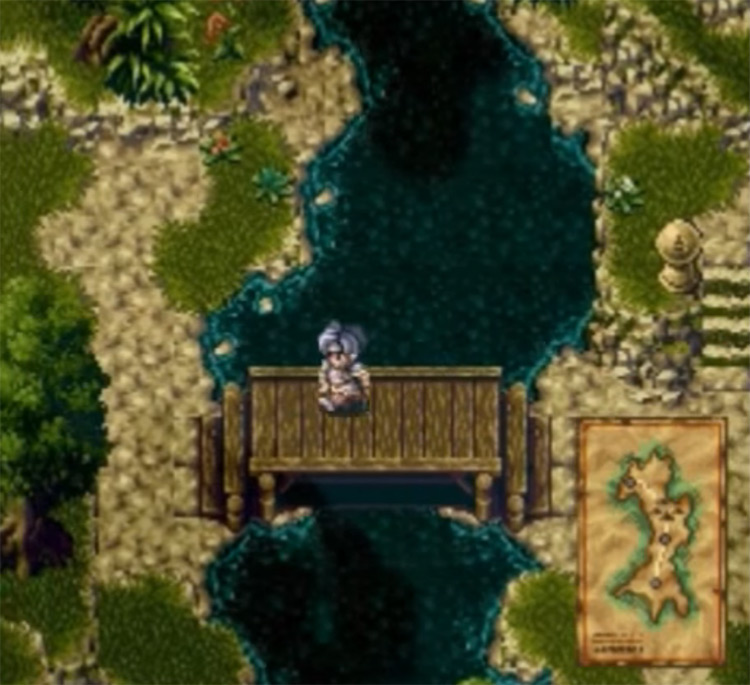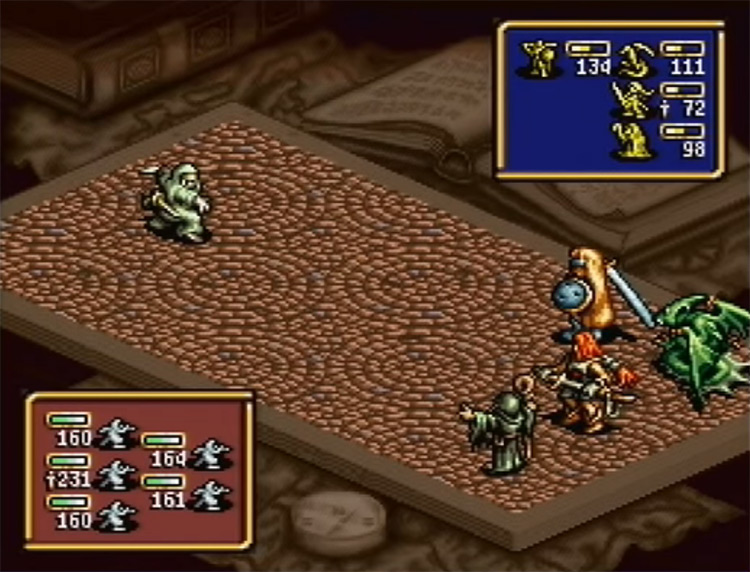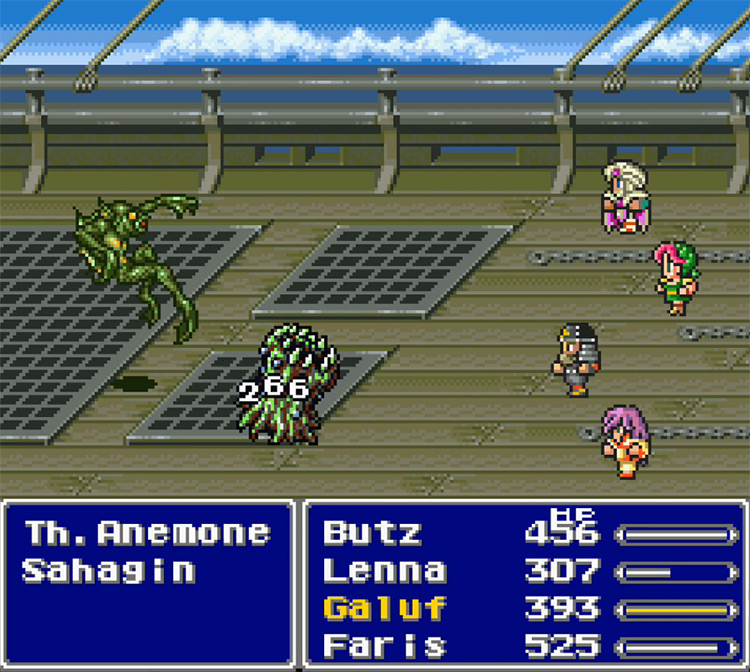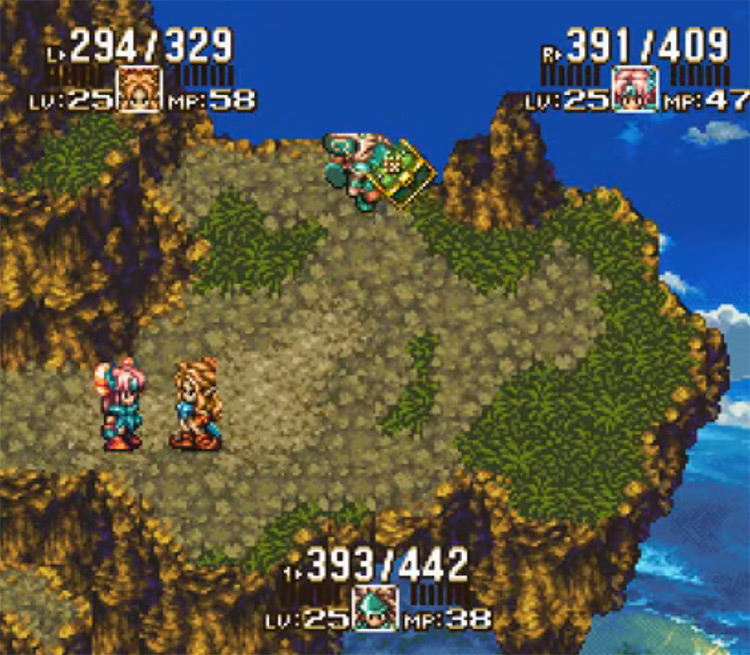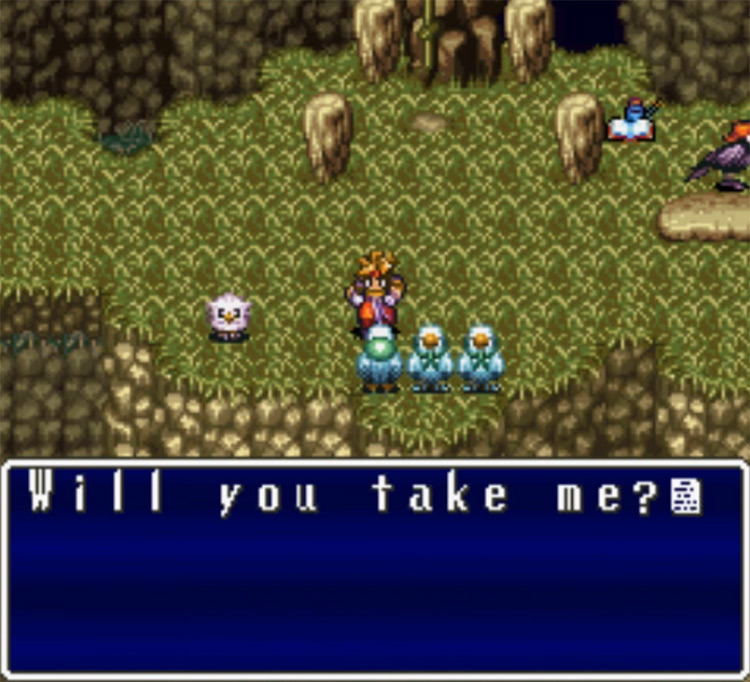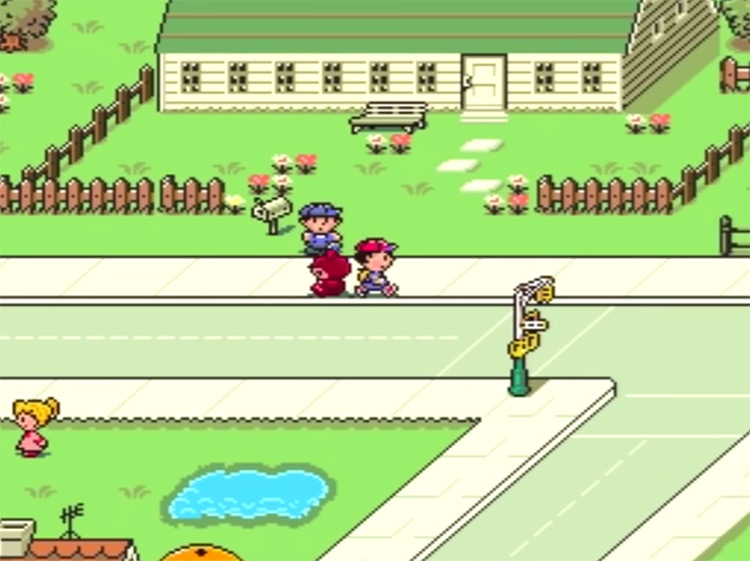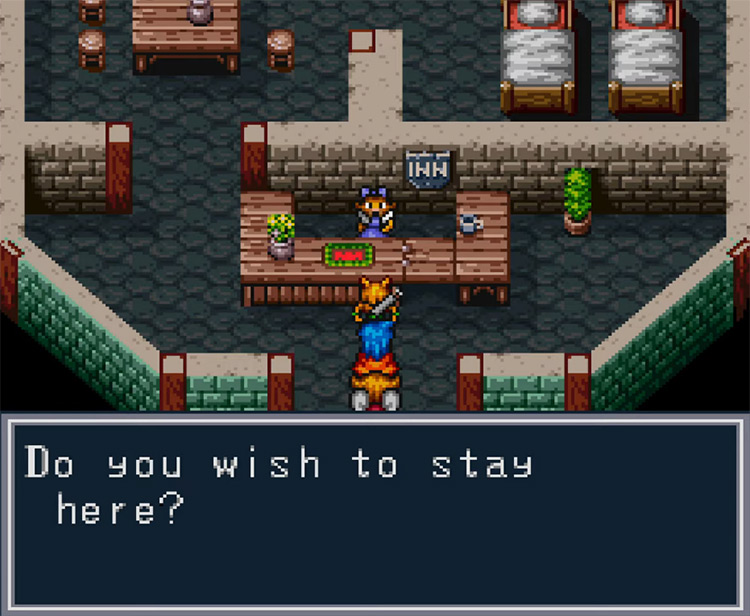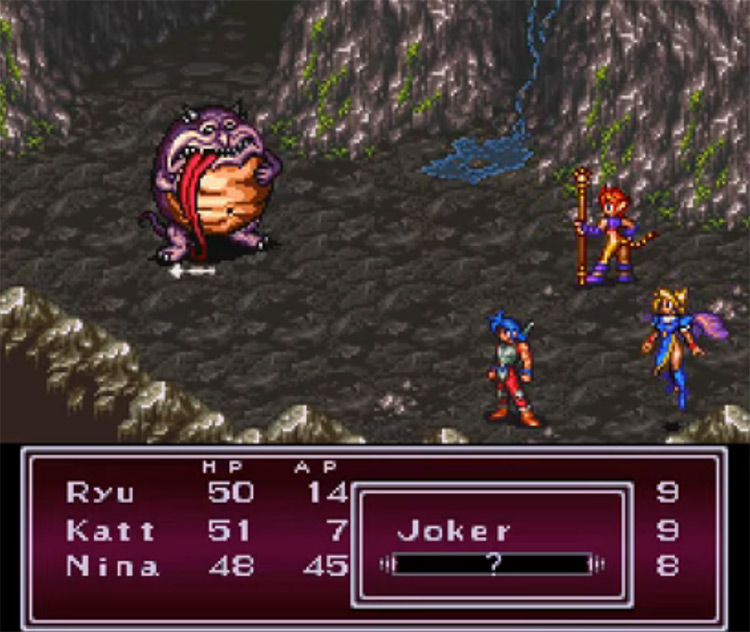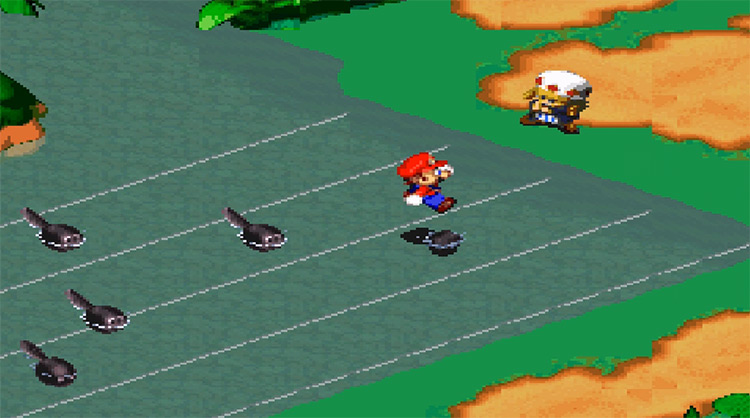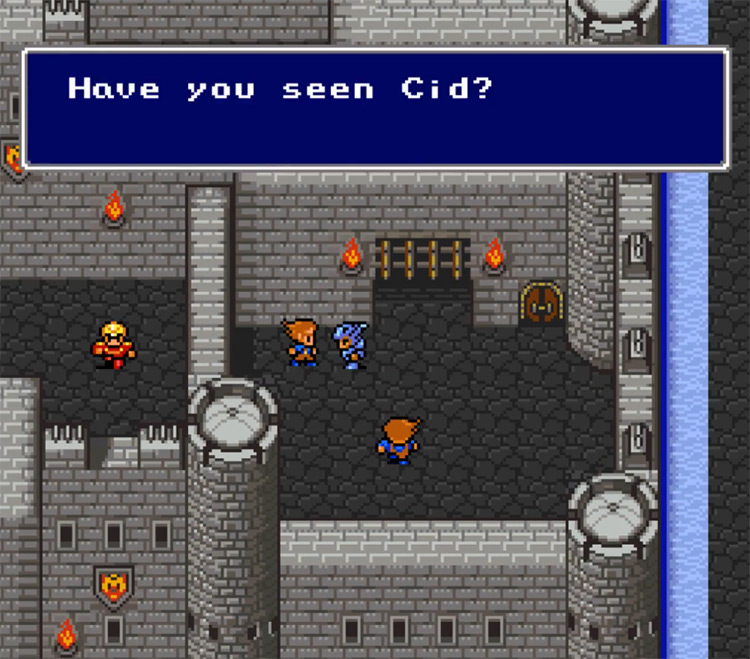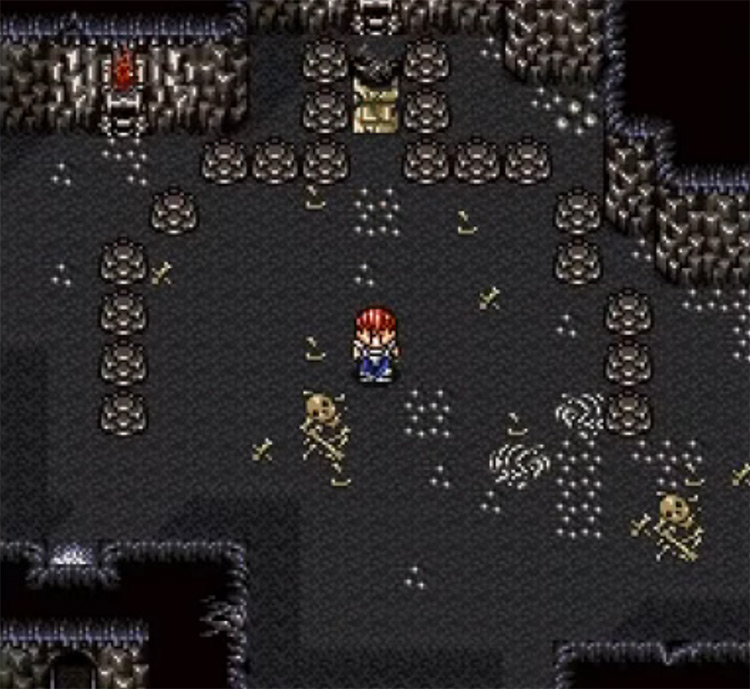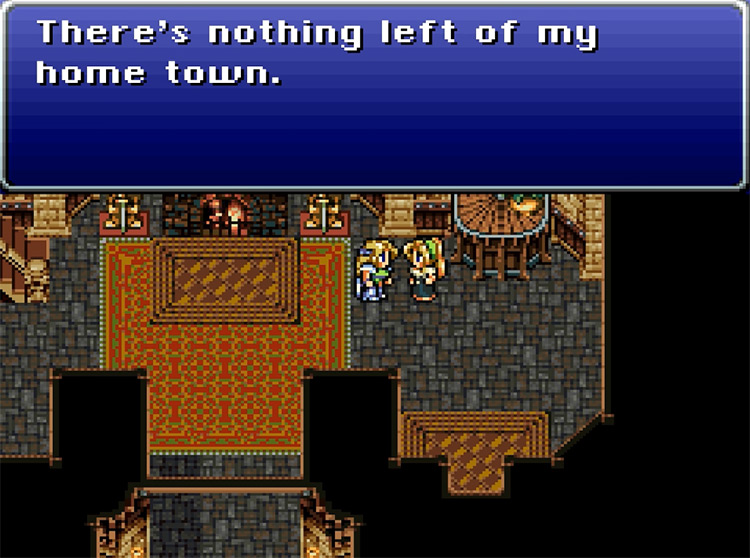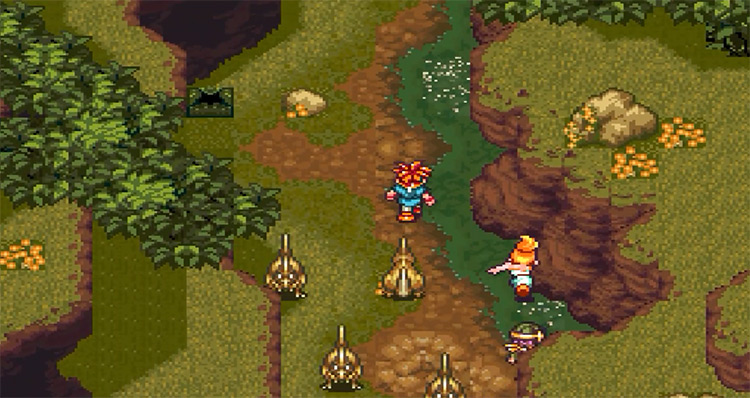Since it was first released in 1991, tons of incredible RPGs made their way to the SNES library – and if we include the Japanese-only Super Famicom’s roster, the list becomes seemingly endless. I’ve always been committed to bringing our readers easy-to-read info on this stuff – so here are some of the best RPGs on the SNES/SFC that you can’t miss out on.
30. Brain Lord (1994)
I’m fascinated with Dungeon Crawlers that manage to keep you on your toes. Atmospheric music, claustrophobic corridors, and puzzles that may put you in some real danger if you do them incorrectly – that’s what it’s all about. You’ll find all of this and more in Brain Lord, which sees your hero and his two “Jades” – units that heal you and perform long-range attacks – exploring the Tower of Light, the Droog Volcano, and three other dungeons in search of his father.
29. Uncharted Waters: New Horizons (1994)
As I’ve said before, I’m always up for unusual RPGs like Uncharted Waters: New Horizons – the best strategic pirate adventure before Sid Meier’s Pirates! Uncharted Waters lets you choose one of six characters, including Joao Franco, Catalina Erantzo, and Otto Baynes. Some are merchants, others adventurers, and there are some combat-minded sailors as well. Depending on who you choose, your experience on the high seas will be much different.
28. Front Mission Series: Gun Hazard (1996) (JP)
If you liked those parts in the Mega Man X series where you have to ride in an armored power suit, you’ll love Front Mission Series: Gun Hazard. This unique title was developed by Omiya Soft and brings together RPG mechanics with side-scrolling shooter gameplay. Progress was made mostly by upgrading your bad-ass mecha with new weapons and other equipment that’ll improve your mechanized armor.
27. Shadowrun (1993)
Japan dominated the RPG market during the SNES era. But the console wouldn’t have been the same without Western RPGs like Shadowrun. Developed by Beam Software, Shadowrun is based on the tabletop RPG of the same name. The setting, storyline, and combat are all heavily influenced by its pen-and-paper counterpart. Its gameplay isn’t all that great. But the storyline is genuinely gripping and a standout in the SNES’ roster.
26. Soul Blazer (1992)
If you like obscure RPG series and dark storylines, you’ll want to play Soul Blazer. This ARPG follows an angelic warrior sent down by God to aid his people in their fight against the evil Deathtoll. As you progress through the game, you’ll notice the world changing around you thanks to your actions. These details are what great games are made of – though the groovy soundtrack and creative dungeon design help a lot.
25. Robotrek (1994)
If what you’re looking for is a genuinely unique game, Robotrek is the RPG for you. Rather than epic medieval fantasy warriors, the game asks you to raise robots and power them up with scrap parts found throughout your adventure. While stats ultimately determine how much damage is dealt or received, the game’s combat system does away with traditional turn based mechanics and replaces them with billiards. No, really.
24. The Legend of Zelda: A Link to the Past (1992)
The SNES saw the release of many seminal titles for Nintendo – including The Legend of Zelda: A Link to the Past. While not the first Legend of Zelda title, this game set the standard that the series would try to emulate for a long time. The gameplay has a nice balance between exploration, puzzle-solving, and challenging combat – and the graphics are to die for. Many people don’t consider this title an RPG – or any other in the Zelda franchise, for that matter. But I’d say it’s a somewhat simplified Action RPG that drives your attention away from the RPG mechanics by presenting progression and powering-up as part of the story.
23. Fire Emblem: Genealogy of the Holy War (1996) (JP)
Most long-time Fire Emblem fans in the West have only known about the series since the release of Fire Emblem: The Blazing Blade for the Game Boy Advance. But by that point, the series already had a long history in Japan. And the best Fire Emblem title on the SNES has to be Genealogy of the Holy War. It takes place in Jugdral, a continent divided into eight countries founded by the “Twelve Crusaders”. The story follows two generations of warriors fighting to stop the revival of an ancient dragon god. It was produced by the legendary Gunpei Yokoi, known as the father of the Game & Watch and the original Game Boy. In such capable hands, it’s no surprise this game was so good.
22. Tales of Phantasia (1995) (JP)
The Tales franchise is among the most well-loved and prolific of the last few decades. Most long-time fans follow it since the incredible Tales of Destiny on the PlayStation, which was the first game released in the US – but it began with Tales of Phantasia for the SFC three years before. This early title already had that high fantasy setting, a great story, and exciting combat – though partner AI was notoriously dumb. I’m a die-hard Tales fan, so I’m thankful to this game for starting one of my favorite franchises.
21. Bahamut Lagoon (1996) (JP)
You may remember the Bahamut as the hardcore boss from Final Fantasy II, or the useful summon in Final Fantasy X – but did you know it has its own game? Bahamut Lagoon was developed by Square, and it plays a bit like Pokémon in that you can capture and raise dragons so you can command them in battle. That said, Bahamut Lagoon is a Tactical RPG. And battles happen on grid-based arenas where you’ll strategically command your dragons in the name of justice. You can feed your dragons different equipment or food to make them more powerful, and that’s honestly half the battle. After all, you can only give commands like “Go!” or “Wait!” rather than choosing specific moves. You have to trust your dragon.
20. Secret of Evermore (1995)
If Secret of Evermore’s name reminds you of another ARPG on the SNES, you’re right on the money. Square developed Secret of Evermore as a sort of American-made spiritual successor to Secret of Mana. Regrettably, it never managed to crawl out of SoM’s shadow. But it remains a fantastic entry in the SNES roster. If you’ve played SoM, you’ll find combat and exploration in SoE pretty familiar, except for one thing. Rather than learning magic or equipping items with assigned spells, players must brew magical potions through alchemy. Actually a very fun playthrough once you get the hang of it.
19. Final Fantasy Mystic Quest (1992)
Some people find the number crunching and deep strategic thought of most traditional RPGs to be too much effort when they’re just trying to relax and wind down with a good video game. If you’re like this, I recommend playing Final Fantasy Mystic Quest. Square developed this game as a “light” RPG that anyone could play with no prior experience. You can enjoy it for the story and graphics, while slowly learning the ropes of role-playing adventures. Going lighter with the RPG elements also allowed devs to focus on making exploration more dynamic. The soundtrack is also fantastic, and you’ll love the story – which follows the main character Benjamin as he tries to reclaim the four stolen elemental Crystals and save the world.
18. Illusion of Gaia (1994)
What developer Quintet started in Soul Blazer would continue in Illusion of Gaia, a spiritual successor with similar overtones and the same top-down RPG action. Gaia tasks protagonist Will to put down monsters by beating them up with his flute – and occasionally morphing into different mighty warriors. Its RPG mechanics are not the deepest. But the bizarre storyline was unique on the Super Nintendo for touching on dark subjects like child labor, cannibalism, and yeah some weird stuff. Other than the storyline, dungeon design in Illusion of Gaia is also among the best on the system – and the way the main character traverses them by changing forms was pretty engaging.
17. Live A Live (1994) (JP)
Not to be confused with Date-A-Live, this unorthodox RPG focuses on giving the player variety – a lot of variety. Live A Live presents the player with seven different storylines, each featuring different gameplay mechanics – including one that completely does away with combat. Each of these campaigns feels like a separate game, and you can play them in any order. Once you clear them all, you’ll get access to a “true ending”, where you’ll finally settle your score with recurring antagonist Odio. If you want something short and packed with flavor, this is it.
16. Secret of Mana (1993)
Secret of Mana is one of the most iconic and well-known games in the entire SNES library, thanks in no small part to the fantastic Action-RPG gameplay and appealing graphics. It’s the second game in the Japanese Seiken Densetsu series – which technically makes it the sequel to Final Fantasy Adventure on the GameBoy. Last-century localization schemes are weird like that. Despite some flaws, this game will capture your attention like few others if you give it a chance. But if you wanna try the remake that’s always another option.
15. Dragon Quest V (1992) (JP)
Japanese Dragon Quest fans must have been in ecstasy when Dragon Quest finally made the jump from the Famicom to the Super Famicom. The graphics were gorgeous, the music was incredible, and it had everything the DQ franchise needed to please its fans. The game is also remembered for introducing the monster taming system that would eventually give rise to Dragon Quest Monsters. Regrettably, Dragon Warrior never actually made that jump onto the SNES – falling into obscurity for years. Dragon Quest V was a Japanese exclusive until the release of its 2009 NDS remake.
14. Dragon Quest VI (1995) (JP)
Dragon Quest VI was the first entry in the franchise developed by Heartbeat rather than Chunsoft – and it’s also the last one in the Zenithian Trilogy, which began with Dragon Quest IV. Much like Dragon Quest V, the sixth installment in the series never made the jump from the Super Famicom to the SNES. Western fans had to sit tight for over 15 years until DQVI was ported to the DS in 2011. It’s a shame, considering just how incredible this RPG was back in the day. The graphics and soundtrack remain just as impressive as they were on its predecessor, and it features some minor gameplay improvements that elevate the experience – including better inventory management.
13. Star Ocean (1996) (JP)
The Star Ocean series has become well-known in the West after the release of Star Ocean: The Second Story for PlayStation in 1999 – but the franchise’s first entry remained locked up in Japan for over ten years. Eventually Square Enix released a remake of this seminal title for the PSP called Star Ocean: First Departure – but even though it’s fantastic, it does change a lot of the original’s charm for anime portraits and animated cutscenes. The game is fondly remembered for its fantastic score and graphics that pushed the SFC to its limits. It also introduced “Private Actions”, a way to improve synergy between your characters by watching scenes where they strengthen their bonds. Versions of this system would start cropping up in other RPGs shortly after.
12. Ogre Battle: The March of the Black Queen (1995)
If you know anything about Tactical RPGs, you’ve heard of Tactics Ogre: Let Us Cling Together on the PlayStation. But did you know about Ogre Battle on the SNES? This real-time Tactical RPG was developed by Quest, and it follows a band of rebels as they lead a revolution. To achieve this, you’ll have to build a competent army, train them, and lead them in battle. There’s an extensive list of unlockable classes for your soldiers, a morality system, and over 10 alternate endings depending on your actions throughout the campaign.
11. Final Fantasy V (1992)
After FFIV revolutionized turn-based combat with its ATB system, it was up to Final Fantasy V to polish it. Which it did by giving players far more information in battle. The most meaningful addition was an action queue showing who’s moving next. The game follows protagonist Bartz as he becomes entangled in a battle for control over the four elemental Crystals. If he fails at protecting them, the fearsome Exdeath will be released, and darkness will cover the world. Other than having a great story and an improved ATB system, the game shines for including a complex Job System that allowed players to come up with unique builds.
10. Seiken Densetsu III (1995) (JP)
One of the biggest acts of cultural vandalism perpetrated by gaming companies during the 90s was keeping Seiken Densetsu III locked-up in Japan. The sequel to Secret of Mana was never released for the American SNES, but it’s included in the 2019 Collection of Mana for the Nintendo Switch – and a modern 3D re-imagining of the game called Trials of Mana was recently released to positive reception. One excellent reason to choose the SFC or Nintendo Switch release over this new remake is the co-op multiplayer aspect. What’s the point of chasing the Mana Sword if you can’t do it with friends?
9. Terranigma (1996)
The last entry in Quintet’s Soul Blazer trilogy was Terranigma – a fantastic Action RPG that never made it to the US but was released in English for European and Australian markets. The game follows Ark, a young boy from the underground village of Crysta who’s tasked with resurrecting the overworld so humans can return to it. Other than its mind-blowing graphics, the game keeps much of that surreal personality that has characterized the series since its inception. Combat is deeply satisfying and the gameplay is much more fluid than in the previous two games.
8. Earthbound (1995)
Few games have garnered as much attention years after release as Earthbound – a game whose legend grows larger by the minute. Part of this hype comes from the excellent storyline and eccentric gameplay. Still, I think it has more to do with its whimsical depiction of suburban America in the 90s eliciting a form of nostalgia. Besides hippies and shady government agents, the game includes some bizarre encounters, including vomiting enemies and talking taxis. Like many other games on the SNES, Earthbound is actually a sequel for an older Japanese game – Mother. If you’d like to play the game as was originally intended, you should try the MaternalBound Redux ROM hack.
7. Breath of Fire (1994)
The original Breath of Fire is a landmark in RPG history. And it was many gamers’ first contact with the RPG genre. Breath of Fire is the quintessential RPG of the 90s. It has the epic high-fantasy storyline, scrappy main character with a mysterious past, and classic turn-based combat – all of the greatest quality, even if it didn’t innovate a whole bunch. Later games in the series would all pay homage to the original by repeating specific characteristics, such as a main character named Ryu who can shapeshift into a dragon, and a winged girl named Nina, among the main characters.
6. Breath of Fire II (1995)
The sequel to the original Breath of Fire held up the same standard of quality as its predecessor. It has nice sprites, a fantastic soundtrack, and a polished turn-based combat system. The game’s main appeal is its extensive story. It’s set 500 years after the events of the original Breath of Fire. And it follows Ryu Bateson (not the one from the first game) as he grapples with his identity as a dragon shapeshifter after his family mysteriously vanishes from existence. The gameplay variety in Breath of Fire is also a significant draw. You can fish, hunt, manage a fairy village, and travel throughout the world seeking elemental shamans to power up your allies.
5. Super Mario RPG: Legend of the Seven Stars (1996)
I love unorthodox RPGs that dare step outside of their comfort zone and try something new – something like making Mario the main character. Super Mario RPG was an exciting experiment put into Square’s hands by the Big N. An RPG starring the world’s favorite video game plumber? Please leave it to the RPG experts. Far from just sticking Mario sprites on an unreleased Final Fantasy prototype, Square built a whole new timing-based combat system for the plumber’s first role-playing experience. And it works well. The game also has hilarious writing and a cheeky personality that would live on in later titles like Paper Mario and the Mario & Luigi series. There’s even quite a few hacks if you’d like to try some variations on this title.
4. Final Fantasy IV (1991)
Final Fantasy IV (released in the US as Final Fantasy II) can be credited with pushing the RPG genre one big step forward, thanks to the Active Time Battle (ATB) system making turn-based combat more dynamic. The game follows Cecil, a somewhat angsty Dark Knight, as he finds himself and attempts to stop the evil Golbez from seizing control of the Crystals and destroying the world. Such an in-depth story was a first for the franchise, but it stuck for all future releases. If you’ve somehow managed to avoid playing any Final Fantasy until now and if you’d be open to tackling this behemoth of a franchise, FF4 might be your best starting option.
3. Lufia II: Rise of the Sinistrals (1996)
If you missed the original Lufia & the Fortress of Doom, you can’t let Rise of the Sinistrals pass you by. The game introduces Zelda-like adventure elements and puzzle-solving to a more traditional RPG in terms of combat and story. This help set it apart and gave the game some much-needed dynamism. While some people don’t dig them, I think the spritework in this title is fantastic – especially on some of the main bosses. Lufia II is also remembered for its Ancient Cave – a 99-floor dungeon where every level is randomized upon entry. It’s a great challenge, and it adds incredible replayability to this great game.
2. Final Fantasy VI (1994)
Square’s Final Fantasy franchise reached one of its highest points with the release of Final Fantasy VI – still considered by many to be the best entry in the series. As far as 2D is concerned, I’d have to agree. This title dropped players in the grimmest world the series had seen to date. The main antagonist, a mage by the name of Kefka, remains the single coolest, most dastardly, and cold-blooded the series has seen. The final boss fight against Kefka’s final form is just unforgettable. It has everything an RPG needs to be great: real stakes driving you forward, 14 interesting playable characters with complex backstories, nice SNES-style graphics, and an incredible soundtrack.
1. Chrono Trigger (1995)
One of the most influential games in the 90s was Square’s Chrono Trigger – a time-traveling adventure that takes the deep RPG mechanics and superb storytelling of the FF franchise, and uses them to tell a new epic story. The storytelling is fast-paced and immersive. It’s easy to get emotionally attached to the game’s characters and their struggles, and every bit of the story seems to be there for a reason. There’s nothing superfluous in this fantastic title. The ATB system introduced in FF4 made a more refined appearance in Chrono Trigger, and played a vital role in making it the iconic well-loved game that it is today. The incredible OST by Nobuo Uematsu alongside Akira Toriyama’s iconic artwork were both crucial to the game’s success. Truly a masterpiece among so many great RPG titles.
